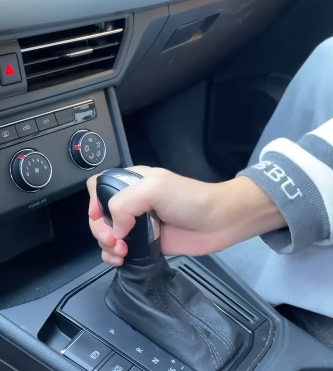
When you’re running late, the last thing you want is to get in your car, press the clutch or move the gear selector—and nothing happens. The shifter just won’t go into gear. Frustrating, right? But before you call a mechanic or panic about expensive repairs, take a breath. Sometimes, the solution is shockingly simple and can be solved in just 3 seconds.
In this article, we’ll explore what you can do immediately when your car won’t shift into gear, plus go over common causes and long-term solutions. Whether you drive a manual or automatic vehicle, this guide will help you stay calm and get moving again.
First, What Do You Mean “Won’t Shift Into Gear”?
Let’s define the problem. When a car won’t shift into gear, you might experience:
- The gear lever won’t move at all.
- The gear stick moves, but the car doesn’t respond.
- Grinding noises when attempting to shift.
- Stiff or stuck gear selector.
- For automatic cars, the car won’t go into Drive or Reverse.
Now let’s break down what you can do instantly before diving into the mechanical reasons.

✅ The 3-Second Fix: Try This First
Before assuming the worst, try this one trick that works in many cases:
Step 1: Press the brake pedal fully and hold it down.
Step 2: Turn the steering wheel left and right slightly while holding the brake.
Step 3: Now try moving the gear shifter.
If the issue was caused by a safety lock or steering wheel lock, this should fix it. The entire process takes less than three seconds.
Still stuck? Don’t worry—below are other quick checks that may help.

🚗 For Automatic Cars: Try These Tricks
1. Check the Brake Pedal Switch
Automatic cars have a shift interlock system that requires you to press the brake pedal before moving the gear lever. If the brake pedal switch is faulty, the gear shifter won’t move.
Fix: Tap the brake pedal multiple times or try turning the car off and on again. Listen for a faint “click” under the gear selector when pressing the brake. If no click is heard, the brake light switch might be broken.
2. Use the Shift Lock Release
Most automatic cars have a manual override called a shift lock release. This is often a small covered slot near the gear shifter.
Fix:
- Turn the key to the “On” position (don’t start the engine).
- Insert a key, pen, or screwdriver into the shift lock slot.
- Hold it down while moving the gear lever.
3. Check Battery Voltage
If your car’s battery is low, electrical systems like the shift interlock may not work properly.
Fix: Turn off all electrical accessories, try starting the car, or check your battery. A simple jump-start may solve the issue.
🚙 For Manual Cars: Try These Checks
1. Press the Clutch Pedal Fully
If the clutch isn’t fully depressed, the transmission won’t disengage and you can’t shift into gear.
Fix: Press the clutch pedal all the way to the floor. If the pedal feels soft or spongy, there might be an issue with the clutch hydraulics.
2. Pump the Clutch Pedal
Air or fluid problems in the clutch system may prevent full disengagement.
Fix: Pump the clutch pedal several times quickly. This can temporarily build pressure in the system and allow shifting.
3. Turn the Engine Off
If the car shifts fine when the engine is off but refuses when running, that points to a clutch issue.
Fix: With the engine off, try shifting through the gears. If it’s smooth, it’s likely a clutch or transmission engagement issue.

⚠️ Common Causes: Why This Happens
- Faulty Clutch Master/Slave Cylinder (Manual)
- Causes soft clutch pedal and gear engagement problems.
- Needs bleeding or replacement.
- Broken Shift Cable or Linkage
- The shifter is disconnected from the transmission.
- Often feels “loose” or disconnected.
- Transmission Fluid Low or Dirty
- Causes gear slipping, hesitation, or refusal to shift.
- Check the transmission fluid level and color.
- Damaged Synchronizers (Manual)
- You may hear grinding or feel resistance when shifting.
- Usually requires transmission repair.
- Transmission Failure
- Rare but serious.
- Symptoms include whining, slipping, or not shifting at all.
- Gear Selector Sensor (Automatic)
- Tells the computer which gear you’ve selected.
- A faulty sensor can confuse the system and prevent shifting.
🧰 Long-Term Fixes & Prevention
- Service Your Transmission: Change your transmission fluid every 30,000–60,000 miles, depending on your vehicle.
- Use the Clutch Properly: For manual cars, avoid riding the clutch or shifting without full depression.
- Avoid Forcing the Shifter: If it won’t go in, forcing it can cause internal damage.
- Listen for Noises: Grinding, clicking, or whining are early warning signs.
- Regular Maintenance: Get your vehicle checked regularly to catch minor problems before they become major.

🧠 When to Call a Mechanic
If the quick fixes don’t work and:
- You hear grinding or clunking noises.
- The shifter moves but the car doesn’t engage.
- The car shifts only when off.
- The clutch pedal sinks to the floor.
…it’s time to bring your car in. These could signal problems with the clutch assembly, transmission, or hydraulic system.
📝 Final Thoughts
Your car refusing to shift into gear doesn’t always mean a huge repair bill. Often, the cause is minor and can be resolved in just a few seconds. Whether it’s engaging the brake, using the shift lock release, or pumping the clutch, these quick tricks can get you going again.
Next time your gear shifter refuses to move, don’t panic. Remember the 3-second rule: press the brake, wiggle the wheel, and try again. If that doesn’t work, walk through the simple steps above. Understanding your car better gives you control—and saves you time and money.


